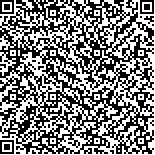| 引用本文: | 桂子玮,李艳,王昕苑,韩佳奇,姚诗琪,牛晓辰.肝细胞癌患者自噬相关基因的预后作用[J].生物信息学,2021,19(3):170-183. |
| GUI Ziwei,LI Yan,WANG Xinyuan,HAN Jiaqi,YAO Shiqi,NIU Xiaochen.Prognostic roles of autophagy-associated genes in patients withhepatocellular carcinoma[J].Chinese Journal of Bioinformatics,2021,19(3):170-183. |
|
| |
|
|
| 本文已被:浏览 1635次 下载 24次 |

码上扫一扫! |
|
|
| 肝细胞癌患者自噬相关基因的预后作用 |
|
桂子玮1,李艳1,王昕苑1,韩佳奇2,姚诗琪3,牛晓辰1
|
|
(1. 山西医科大学 第二临床医学院,太原 030000;2. 山西医科大学 药学院,太原 030000;3.山西医科大学 第一临床医学院,太原 030000)
|
|
| 摘要: |
| 构建由自噬相关基因组成的预后模型,预测肝细胞癌(HCC)患者的生存预后情况,为其个性化诊疗和临床研究提供依据。利用TCGA数据库中HCC的测序信息与人类自噬数据库联合,筛选差异表达的自噬相关基因,对其进行GO富集与KEGG通路分析;通过单因素与多因素Cox分析筛选与患者生存预后明显相关的风险基因,构建预后风险评分模型;根据模型计算患者风险值并验证模型,利用GEPIA2.0网页工具与HPA数据库对风险基因在HCC中的表达情况以及与生存预后的关系进行验证。结果发现,HCC肿瘤组织相较正常组织共筛选到61个差异表达的自噬相关基因(表达上调57个,下调4个),GO富集与KEGG通路分析显示均与自噬有关;单因素Cox分析共筛选到12个与患者生存预后相关的基因,多因素Cox分析后共有4个基因被纳入预后风险评分模型,分别是SQSTM1、HDAC1、RHEB和ATIC,计算公式为:风险值(risk score)=SQSTM1表达量×0.185+HDAC1表达量×0.382+RHEB表达量×0.423+ATIC表达量×0.438;K-M生存曲线显示高风险组生存率低于低风险组,风险曲线提示4个基因与不良预后密切相关,ROC曲线证明模型具有预测意义;GEPIA2.0网页工具以及HPA数据库表明高表达4个基因均导致患者生存率降低。所构建预后风险评分模型可有效预测HCC患者生存预后情况,并提供个性化诊疗策略。 |
| 关键词: 肝细胞癌 自噬 预后模型 |
| DOI:10.12113/202006001 |
| 分类号:R735.7 |
| 文献标识码:A |
| 基金项目:山西省2019年大学生创新创业训练计划项目(No.2019189). |
|
| Prognostic roles of autophagy-associated genes in patients withhepatocellular carcinoma |
|
GUI Ziwei1, LI Yan1, WANG Xinyuan1, HAN Jiaqi2, YAO Shiqi3, NIU Xiaochen1
|
|
(1.The Second Clinical College,Shanxi Medical University, Taiyuan 030000, China; 2. College of Pharmacy,Shanxi Medical University, Taiyuan 030000, China; 3.The First Clinical College,Shanxi Medical University, Taiyuan 030000, China)
|
| Abstract: |
| A prognostic model composed of autophagy-related genes was constructed to predict the survival and prognosis of patients with hepatocellular carcinoma (HCC) and provide basis for individualized diagnosis and clinical research. The sequencing information of HCC in TCGA database and human autophagy database was utilized to screen differentially expressed autophagy-related genes for GO enrichment and KEGG pathway analysis. The risk genes significantly related to survival prognosis were screened through univariate and multivariate Cox analyses to construct prognostic risk score model. The patient risk values were calculated, and the models were verified. GEPIA2.0 web tools and HPA database were emplayed to verify the expression of risk genes in the HCC and the relationship with survival prognosis. Results show that compared with normal tissues, a total of 61 differentially expressed autophagy-related genes (57 up-regulated and 4 down-regulated) were screened from HCC tumor tissues. GO enrichment and KEGG pathway analysis results showed that these genes were autophayg-associated. A total of 12 genes related to survival and prognosis of patients were selected by univariate Cox analysis. After multivariate Cox analysis, four genes (SQSTM1, HDAC1, RHEB. and ATIC) were included in the prognostic risk scoring model. The formula was as follows: risk score=SQSTM1 expression levels×0.185+HDAC1 expression levels×0.382+RHEB expression levels×0.423+ATIC expression levels×0.438. K-M survival curves showed that the survival rate in high risk group was lower than that in low risk group, risk curves suggested that four genes were closely related to poor prognosis, and ROC curves proved that the model had predictive significance. Results obtained from GEPIA2.0 web tool and HPA database showed that the high expression of four genes resulted in reduced survival. The constructed prognostic risk score model can effectively predict the survival and prognosis of patients and provide personalized diagnosis and treatment strategies. |
| Key words: Hepatocellular carcinoma Autophagy Prognostic model |
|
|
|
|






